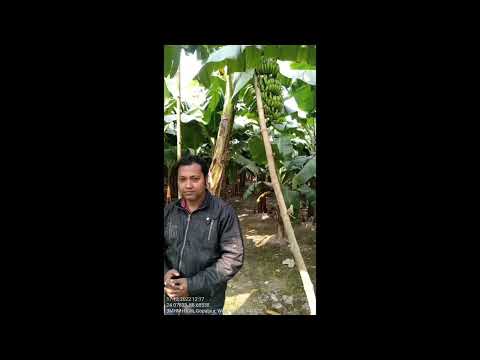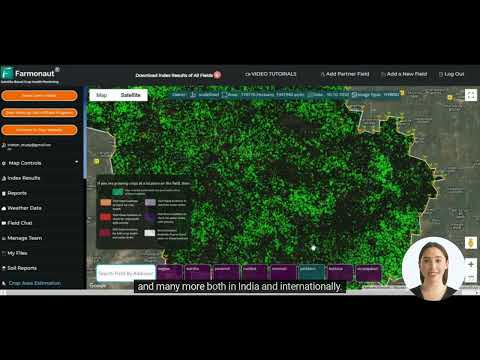Alabama Cotton Industry Leader Honored: National Cotton Ginner of the Year 2024
We, at Farmonaut, are excited to share the latest news from the heart of America’s cotton industry. The National Cotton Ginners Association (NCGA) has recently honored an outstanding leader in the Alabama cotton industry, showcasing the vital role of cotton ginning in U.S. agriculture. This prestigious award not only highlights individual excellence but also underscores the significance of Alabama’s contribution to cotton farming and ginning on a national scale.

“The National Cotton Ginners Association’s annual meeting attracts representatives from at least 2 major cotton-producing states: Texas and Georgia.”
The Prestigious Cotton Ginner of the Year Award
In a landmark event held in Dallas, Texas, the NCGA has bestowed its highest honor upon Richard Lindsey, a veteran Alabama ginner, naming him the 2024 Horace Hayden National Cotton Ginner of the Year. This accolade is a testament to Lindsey’s outstanding service and leadership in the U.S. cotton industry, particularly in the realm of cotton gin management and cotton industry leadership.
The annual NCGA award recognizes individuals who have demonstrated:
- Able, efficient, and faithful service to the ginning industry
- Continuation of the principles exemplified by Horace Hayden, a former NCGA executive secretary
Lindsey’s recognition underscores the critical role of ginners in shaping industry trends and addressing key issues in cotton farming, from production challenges to marketing strategies. This award not only celebrates individual achievement but also highlights the economic importance of the cotton sector in the United States.
Richard Lindsey: A Legacy in Alabama Cotton
Richard Lindsey’s journey in the cotton industry is a remarkable story of dedication and innovation. A native of Cherokee County, Alabama, Lindsey’s connection with cotton farming dates back to 1957 when he harvested his first crop as a 4H project. Over the past 58 years, he has not only been a dedicated cotton producer but has also played a pivotal role in managing Cherokee Gin and Cotton Company, which stands as the largest gin in Alabama.
Lindsey’s contributions to the cotton industry extend far beyond his home state. He currently serves as the President of the National Cotton Ginners Association, having previously held the position of Vice President for three years. His involvement in numerous National Cotton Ginners and National Cotton Council committees has been instrumental in shaping policies and practices that benefit the entire U.S. cotton sector.
Some of Lindsey’s notable positions include:
- National Cotton Council Director
- Member of the Council’s Executive Committee
- Member of the Cotton Council International Board of Directors
- Past President of the Southeastern Ginners Association
His exemplary service earned him the title of Southeastern Ginner of the Year in 2010, foreshadowing his national recognition in 2024.
Lindsey’s Impact Beyond Cotton
Richard Lindsey’s influence extends beyond the cotton fields and ginning facilities. His 35-year tenure in the Alabama House of Representatives saw him hold key positions, including Chair of Appropriations and Agriculture Committees. His legislative achievements have had a lasting impact on his community, particularly in education and local development.
One of his most notable accomplishments was bringing a satellite campus of Gadsden State Community College to Cherokee County, with the sports arena named in his honor. This initiative has significantly enhanced educational opportunities in the region, demonstrating Lindsey’s commitment to community development alongside his dedication to the cotton industry.
Interested in leveraging technology for better farm management? Check out Farmonaut’s cutting-edge solutions:
The Importance of Cotton Ginning in U.S. Agriculture
The recognition of Richard Lindsey as the National Cotton Ginner of the Year sheds light on the crucial role of cotton ginning in the broader agricultural landscape of the United States. Cotton ginning is not merely a process; it’s a vital link in the cotton production chain that significantly impacts the quality and marketability of cotton.
Key aspects of cotton ginning include:
- Separating cotton fibers from seeds and other materials
- Cleaning and preparing cotton for textile manufacturing
- Ensuring the quality and consistency of cotton products
- Contributing to the efficiency of the cotton supply chain
The NCGA’s annual meeting serves as a platform for industry leaders to discuss and address critical issues facing the cotton ginning industry. These gatherings are instrumental in shaping the future of cotton production, processing, and marketing in the United States.

“Alabama’s cotton industry leadership is highlighted by winning the prestigious Cotton Ginner of the Year award for 2024.”
Alabama’s Role in the National Cotton Industry
The recognition of an Alabama ginner for this national award underscores the state’s significant contribution to the U.S. cotton industry. Alabama has long been a key player in cotton production, with its rich agricultural heritage and favorable climate conditions contributing to its success in this sector.
Some key facts about Alabama’s cotton industry:
- Alabama consistently ranks among the top cotton-producing states in the U.S.
- The state’s cotton industry provides substantial economic benefits, including job creation and export revenue
- Alabama’s ginning facilities, like the Cherokee Gin and Cotton Company managed by Lindsey, play a crucial role in processing the state’s cotton crop
- The state’s cotton farmers and ginners are known for adopting innovative practices and technologies to enhance productivity and sustainability
The National Scope of Cotton Production
While Alabama’s achievements are noteworthy, the NCGA meeting highlighted the national scope of cotton production in the United States. Representatives from various cotton-growing states, from Texas to Georgia, participated in the event, emphasizing the widespread importance of cotton farming and ginning across the country.
The national scope of cotton production is evident in the following aspects:
- Diverse geographic representation in cotton farming, spanning multiple states
- Varied climate conditions and farming practices across different regions
- Interconnected network of ginners, farmers, and industry associations
- Collaborative efforts in addressing industry-wide challenges and opportunities
Explore Farmonaut’s API for advanced agricultural data:
Key Issues Addressed at the NCGA Meeting
The annual NCGA meeting serves as a crucial forum for discussing and addressing key issues facing the cotton industry. Some of the primary topics covered during the event included:
- Production Challenges: Discussions on weather-related issues, pest management, and sustainable farming practices.
- Technological Advancements: Exploration of new technologies in cotton ginning and farming, including precision agriculture tools and automation.
- Market Trends: Analysis of global cotton markets, price fluctuations, and strategies for maintaining competitiveness.
- Regulatory Environment: Updates on cotton farm legislation and its impact on producers and ginners.
- Sustainability Initiatives: Focus on environmentally friendly practices and their implementation in cotton production and processing.
These discussions are vital for shaping the future of the cotton industry, ensuring its sustainability, and maintaining its economic importance in the agricultural sector.
Technological Innovations in Cotton Ginning
The cotton ginning industry has seen significant technological advancements in recent years, contributing to improved efficiency, quality, and sustainability. Some key innovations include:
- Automated Sorting Systems: Using optical sensors and AI to sort cotton based on quality parameters.
- Energy-Efficient Machinery: Development of gins that consume less power while maintaining high productivity.
- Precision Moisture Management: Advanced systems for optimal moisture control during the ginning process.
- Data Analytics: Utilization of big data for process optimization and quality control.
- Sustainable Practices: Implementation of eco-friendly technologies to reduce environmental impact.
These technological advancements not only enhance the efficiency of cotton ginning but also contribute to the overall sustainability and profitability of the cotton industry.
The Economic Impact of Cotton Production
The cotton industry plays a significant role in the U.S. economy, particularly in states like Alabama, Texas, and Georgia. The economic impact extends beyond just farming and ginning, encompassing various related sectors and providing substantial employment opportunities.
Key economic aspects of the cotton industry include:
- Job creation in farming, ginning, textile manufacturing, and related industries
- Contribution to export revenues, with the U.S. being a major global cotton exporter
- Support for rural economies in cotton-producing regions
- Stimulation of research and development in agricultural technologies
- Indirect economic benefits through related industries like transportation and machinery manufacturing
Join Farmonaut’s affiliate program and earn while helping farmers:
Earn With Farmonaut: Affiliate Program
Earn 20% recurring commission with Farmonaut’s affiliate program by sharing your promo code and helping farmers save 10%. Onboard 10 Elite farmers monthly to earn a minimum of $148,000 annually—start now and grow your income!
Sustainable Practices in Cotton Farming and Ginning
Sustainability has become a key focus in the cotton industry, with farmers and ginners alike adopting practices that reduce environmental impact while maintaining productivity. Some sustainable practices gaining traction include:
- Water Conservation: Implementation of efficient irrigation systems and drought-resistant cotton varieties.
- Soil Health Management: Use of cover crops and reduced tillage to improve soil quality.
- Integrated Pest Management: Adoption of biological controls and targeted pesticide use to minimize chemical inputs.
- Energy Efficiency: Utilization of renewable energy sources in ginning operations.
- Waste Reduction: Development of processes to recycle and repurpose cotton byproducts.
These sustainable practices not only benefit the environment but also contribute to the long-term viability of the cotton industry, ensuring its continued success for future generations.
The Role of Ginners’ Associations in Shaping Industry Trends
Ginners’ associations, like the NCGA, play a crucial role in shaping the direction of the cotton industry. These organizations serve multiple functions that benefit both individual members and the industry as a whole:
- Advocacy: Representing the interests of ginners in policy discussions and legislative processes.
- Education: Providing training and professional development opportunities for ginners.
- Research Support: Funding and promoting research initiatives to improve ginning technologies and practices.
- Networking: Facilitating connections and knowledge sharing among industry professionals.
- Standards Development: Contributing to the establishment and maintenance of industry standards for cotton quality and ginning practices.
Through these activities, ginners’ associations help ensure that the cotton ginning industry remains innovative, efficient, and responsive to changing market demands and environmental considerations.
Looking Ahead: The Future of Cotton Ginning
As we look to the future of cotton ginning, several trends and developments are likely to shape the industry:
- Increased Automation: Further integration of AI and robotics in ginning processes.
- Sustainability Focus: Greater emphasis on eco-friendly practices and circular economy principles.
- Data-Driven Decision Making: Enhanced use of big data and analytics in gin management.
- Global Market Adaptation: Strategies to remain competitive in an evolving global cotton market.
- Climate Resilience: Development of techniques and technologies to adapt to changing climate conditions.
These future trends underscore the dynamic nature of the cotton ginning industry and its continuous evolution to meet new challenges and opportunities.
Key Cotton Industry Statistics by State
| State | Cotton Acreage | Annual Production (bales) | Number of Active Gins | Economic Impact (USD) |
|---|---|---|---|---|
| Alabama | 450,000 | 900,000 | 30 | $600 million |
| Texas | 6,000,000 | 8,000,000 | 200 | $2.5 billion |
| Georgia | 1,200,000 | 2,400,000 | 65 | $1.2 billion |
| Mississippi | 600,000 | 1,200,000 | 40 | $800 million |
Note: These figures are estimates and may vary year to year based on various factors including weather conditions and market demands.
Conclusion: Celebrating Excellence in Cotton Ginning
The recognition of Richard Lindsey as the 2024 National Cotton Ginner of the Year is not just a personal achievement but a celebration of the entire cotton ginning industry’s dedication and innovation. It highlights the critical role that ginners play in maintaining the quality and efficiency of cotton production in the United States.
As the cotton industry continues to evolve, facing new challenges and opportunities, the expertise and leadership of professionals like Lindsey will be crucial in guiding the sector towards a sustainable and prosperous future. The NCGA’s annual meeting and awards serve as a reminder of the industry’s resilience, adaptability, and ongoing commitment to excellence.
The cotton ginning industry, with its rich history and promising future, remains a cornerstone of American agriculture. As we honor the achievements of industry leaders, we also look forward to the continued growth and innovation that will shape the future of cotton production in the United States and beyond.
FAQs
- What is the significance of the National Cotton Ginner of the Year award?
This prestigious award recognizes outstanding service and leadership in the U.S. cotton industry, particularly in cotton ginning. It honors individuals who have made significant contributions to the efficiency and advancement of the ginning sector. - How does cotton ginning contribute to the overall cotton industry?
Cotton ginning is a crucial process that separates cotton fibers from seeds and other materials, preparing the cotton for textile manufacturing. It plays a vital role in determining the quality and marketability of cotton products. - What are some of the current challenges facing the cotton ginning industry?
Key challenges include adapting to climate change, implementing sustainable practices, managing energy costs, addressing labor shortages, and keeping up with technological advancements in ginning machinery. - How is technology changing the cotton ginning process?
Technology is revolutionizing cotton ginning through automated sorting systems, energy-efficient machinery, precision moisture management, and the use of data analytics for process optimization and quality control. - What role do ginners’ associations play in the cotton industry?
Ginners’ associations like the NCGA advocate for industry interests, provide educational resources, support research initiatives, facilitate networking, and contribute to the development of industry standards.







